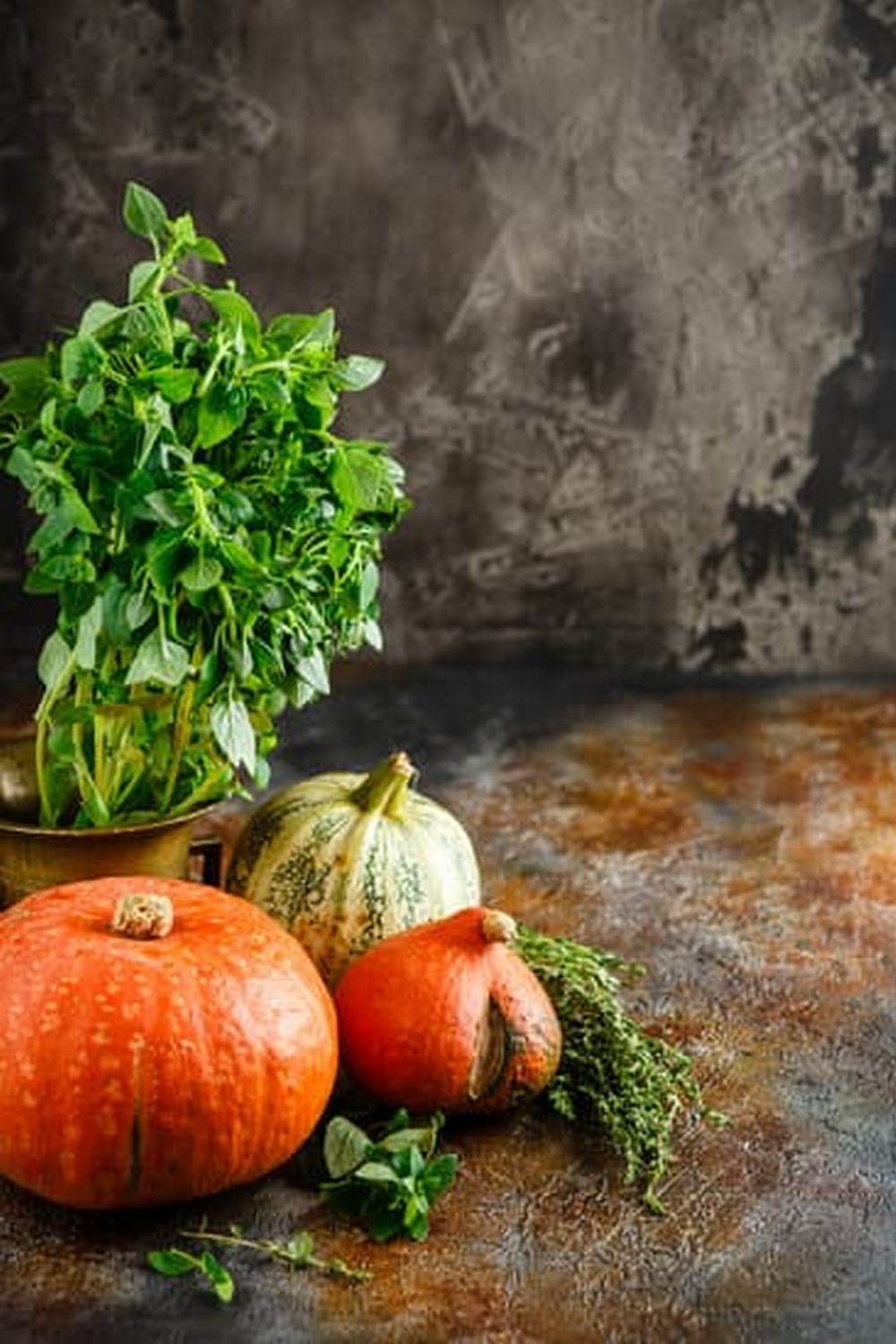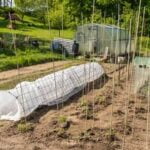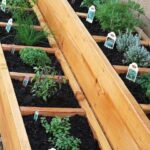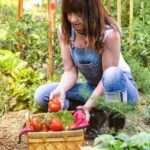Container gardens for vegetables offer a convenient and space-saving solution for those who want to grow their own produce but have limited outdoor space. In this article, we will explore the benefits and essential tips for successful container vegetable gardening, as well as the best vegetables to grow in containers.
One of the main advantages of container gardening for vegetables is the ability to grow fresh produce even in small urban or suburban areas where traditional garden plots may not be available. Additionally, with the right containers and care, vegetables can thrive in container gardens just as well as they do in traditional garden beds.
In this comprehensive guide, we will cover everything you need to know about growing a thriving vegetable garden in containers, from choosing the right containers and selecting suitable vegetables to soil and fertilizer requirements, watering and maintenance, pest control and disease prevention, all the way to harvesting and enjoying your homegrown produce. Whether you’re an experienced gardener or new to container gardening, this article will provide valuable insights to help you successfully grow vegetables in containers.
Benefits of Growing Vegetables in Containers
Growing vegetables in containers offers a myriad of benefits that make it an attractive option for gardeners, whether they have limited space, poor soil quality, or simply want the convenience and flexibility of container gardening. One of the main advantages of container gardens for vegetables is the ability to control the growing environment, including sunlight exposure and soil quality. This can lead to higher yields and healthier plants compared to traditional garden beds.
Another benefit is the versatility of container gardens, as they can be placed on patios, balconies, or even indoors, allowing people in urban areas or with limited outdoor space to still enjoy homegrown produce. Additionally, container gardening can help reduce the risk of pests and diseases that are commonly found in traditional garden beds.
Furthermore, using containers for vegetable gardening can also make it easier to maintain a consistent watering and fertilizing schedule, leading to healthier and more productive plants. It also allows for better weed control and makes it easier to protect plants from extreme weather conditions. With the right containers and care, virtually any type of vegetable can be grown successfully in a container garden.
| Benefit | Description |
|---|---|
| Controlled Growing Environment | Allows for better control over sunlight exposure and soil quality, leading to higher yields and healthier plants. |
| Versatility | Suitable for urban areas or small spaces, can be placed on patios, balconies, or indoors. |
| Pest and Disease Control | Reduces the risk of pests and diseases commonly found in traditional garden beds. |
Choosing the Right Containers for Vegetable Gardens
Size and Depth
When it comes to selecting the right containers for your vegetable garden, size and depth are essential considerations. Vegetables need enough space for their roots to grow and spread out, so it’s important to choose containers that are deep enough to accommodate this. Look for containers that are at least 12 inches deep to allow for proper root development.
Material
The material of the container can also make a big difference in the success of your vegetable garden. While plastic pots are lightweight and come in a variety of sizes, they can also retain heat and may need more frequent watering.
On the other hand, ceramic or clay pots are durable and offer good insulation for plant roots, but they can be heavy and prone to cracking in extreme temperatures. Consider the pros and cons of different container materials before making your selection.
Drainage
Proper drainage is crucial for container gardens for vegetables. Without adequate drainage, water can accumulate at the bottom of the pot, leading to root rot and other issues. Look for containers with drainage holes at the bottom, or be prepared to drill some yourself if necessary. Additionally, consider placing a layer of gravel or small stones at the bottom of the container before adding soil to improve drainage.
By carefully considering these factors when choosing containers for your vegetable garden, you can set yourself up for success and ensure that your plants have an ideal environment to thrive. With the right containers in place, you’ll be on your way to enjoying a bountiful harvest from your container gardens for vegetables.
Selecting the Best Vegetables for Container Gardening
When it comes to container gardens for vegetables, choosing the right vegetables to grow is essential for a successful harvest. Not all vegetables are well-suited for container gardening, so it’s important to select varieties that will thrive in a confined space.
Some vegetables that are particularly well-suited for container gardening include tomatoes, peppers, lettuce, radishes, and herbs like basil and parsley. These plants have compact root systems and don’t require a lot of space to grow, making them ideal for growing in containers.
Tomatoes are one of the most popular choices for container gardens for vegetables. There are many determinate tomato varieties specifically bred for growing in containers, such as Patio Princess and Tiny Tim. Peppers, both sweet and hot varieties, also do well in containers. Lettuce and radishes are quick-growing crops that are perfect for container gardening, as they don’t need a lot of space to reach maturity.
Herbs are another great option for vegetable container gardens. Basil, parsley, cilantro, and chives can all be grown in small pots on a sunny balcony or patio. They not only provide fresh flavors for cooking but also add beauty to your container garden with their aromatic foliage.
When selecting vegetables for your container garden, consider the space you have available and the amount of sunlight your containers will receive. Most vegetables require at least 6-8 hours of direct sunlight each day, so be sure to place your containers in the sunniest spot available. With the right selection of vegetable plants and proper care, you can enjoy a bountiful harvest from your container garden.
| Vegetable | Suitable Container Size |
|---|---|
| Tomatoes | 5-gallon or larger |
| Peppers | 3-gallon or larger |
| Lettuce/Radishes | 1 gallon or larger |
Essential Tips for Successful Container Vegetable Gardening
When it comes to successfully growing vegetables in containers, there are a few essential tips that can make a big difference in the outcome of your garden. Here are some important things to keep in mind:
- Choose the right size containers for your vegetables: Different vegetables require different amounts of space for their roots to grow. For example, tomatoes and peppers require larger pots, while lettuce and herbs can thrive in smaller containers. Be sure to research the specific needs of each vegetable you want to grow.
- Provide proper drainage: Good drainage is crucial for container gardens. Make sure your pots have drainage holes at the bottom to prevent waterlogged soil, which can lead to root rot and other problems.
- Select the right location: Most vegetables need at least six hours of sunlight per day. Choose a sunny spot on your patio, balcony, or rooftop for your container garden. If you’re growing vegetables indoors, place them near a south-facing window where they can get enough sunlight.
In addition to these tips, it’s important to pay attention to watering and fertilizing your container gardens for vegetables. Overwatering or underwatering can harm your plants, so be mindful of the moisture levels in the soil. Additionally, using a high-quality organic fertilizer specifically designed for vegetable plants will help them thrive and produce a bountiful harvest.
Lastly, regular maintenance such as pruning, trellising (if necessary), and monitoring for pests and diseases is crucial for the health of your container vegetable garden. By following these essential tips, you can ensure that your vegetables flourish in their containers and provide you with fresh produce throughout the growing season.
Soil and Fertilizer Requirements for Vegetable Container Gardens
When it comes to growing vegetables in container gardens, the quality of the soil and the right fertilizers are crucial for ensuring a successful harvest. In this section, we will discuss the essential soil and fertilizer requirements for maintaining a healthy and productive vegetable container garden.
Choosing the Right Soil
The key to a thriving vegetable container garden is using high-quality soil that provides good drainage and aeration. Look for a well-balanced potting mix specifically formulated for container gardening, as these mixes are designed to retain moisture without becoming waterlogged. Avoid using regular garden soil, as it may compact in containers and hinder root development.
Fertilizing Your Vegetable Container Garden
In addition to selecting the right soil, fertilizing your vegetable container garden is essential for providing necessary nutrients for plant growth. Begin by incorporating a slow-release fertilizer into the soil at the time of planting. As your vegetables grow, consider supplementing with liquid or granular fertilizers throughout the growing season to ensure they have access to all essential nutrients.
Organic Options for Soil and Fertilizer
For those interested in organic gardening practices, there are plenty of options for organic potting mixes and fertilizers available on the market. These products are free from synthetic chemicals and provide an environmentally-friendly approach to growing vegetables in containers.
By prioritizing the quality of your soil and utilizing appropriate fertilization techniques, you can create an optimal growing environment for your container gardens for vegetables, leading to bountiful harvests of fresh produce.
Watering and Maintenance of Vegetables in Containers
Watering and maintaining vegetables in containers are essential for ensuring a successful container garden. Container gardens for vegetables require regular watering to keep the plants healthy and thriving. The key is to monitor the moisture levels of the soil, as containers tend to dry out quicker than traditional gardens. It is important to water the vegetable plants consistently, ensuring that the water reaches the roots without causing waterlogged soil.
In addition to watering, regular maintenance is crucial for container gardens for vegetables. This includes monitoring for any signs of pests or diseases, pruning as needed, and providing support such as stakes or trellises for vining vegetables. Regularly inspecting the plants for issues will help address any problems early on and maintain the overall health of the vegetable garden.
In terms of maintenance, it is also important to regularly fertilize the soil in container gardens for vegetables. Since container soil can become depleted of nutrients more quickly than garden soil, it is vital to provide supplemental fertilization throughout the growing season.
This will ensure that the vegetable plants have access to the necessary nutrients to produce a bountiful harvest. Proper watering and maintenance practices will contribute to the overall success of your container garden for vegetables and lead to a rewarding harvest of homegrown produce.
Pest Control and Disease Prevention in Container Gardens for Vegetables
When you are growing vegetables in containers, it is important to be proactive in pest control and disease prevention to ensure a healthy and productive harvest. Here are some essential tips for keeping your container garden free from pests and diseases:
1. Choose resistant varieties: When selecting the best vegetables for container gardening, opt for varieties that are known to be resistant to common pests and diseases. This will reduce the likelihood of infestations and infections in your container garden.
2. Practice crop rotation: If you are reusing containers for different vegetable crops, make sure to practice crop rotation. This means avoiding planting the same family of vegetables in the same container year after year, as this can lead to the build-up of specific pests and diseases.
3. Monitor regularly: Keep an eye on your container gardens for vegetables regularly to spot any signs of pests or diseases early on. Look for holes in leaves, discoloration, wilting, or any unusual growth patterns. Identifying problems early will allow you to take action before they become a major issue.
4. Use natural remedies: Consider using natural pest control methods such as introducing beneficial insects like ladybugs or praying mantises, or using organic sprays such as neem oil or insecticidal soap to manage pest infestations. For disease prevention, ensure good air circulation around plants and avoid overhead watering to reduce the risk of fungal infections.
By implementing these tips for pest control and disease prevention, you can maintain a healthy and thriving container garden for vegetables that will provide you with an abundant harvest throughout the growing season. Remember that proactive measures are key in maintaining a successful vegetable container garden.
Harvesting and Enjoying the Fruits of Your Container Vegetable Garden
In conclusion, container gardening for vegetables can be a rewarding and enjoyable experience. Whether you have limited outdoor space or simply want the convenience of having your vegetables close at hand, container gardens offer an ideal solution. By following the tips provided in this article, you can create a successful vegetable garden in containers and enjoy a bountiful harvest.
One of the greatest benefits of growing vegetables in containers is the ability to control the growing environment. This means that you can easily provide the optimal conditions for your plants, resulting in healthier and more productive crops. Additionally, container gardens are also less prone to weeds and pests, making maintenance much easier compared to traditional garden beds.
Finally, when it comes to harvesting and enjoying the fruits of your labor, container gardens for vegetables offer unparalleled convenience. You can simply step outside your door and pick fresh tomatoes, herbs, or peppers for your meals.
There is something truly satisfying about being able to grow and enjoy your own produce right at home. So whether you’re a seasoned gardener or just starting out, consider trying your hand at container gardening for vegetables and reap the rewards of a thriving garden right on your doorstep.

If you’re looking to get into vegetable gardening, or are just looking for some tips on how to make your current garden better, then you’ve come to the right place! My name is Ethel and I have been gardening for years. In this blog, I’m going to share with you some of my best tips on how to create a successful vegetable garden.





